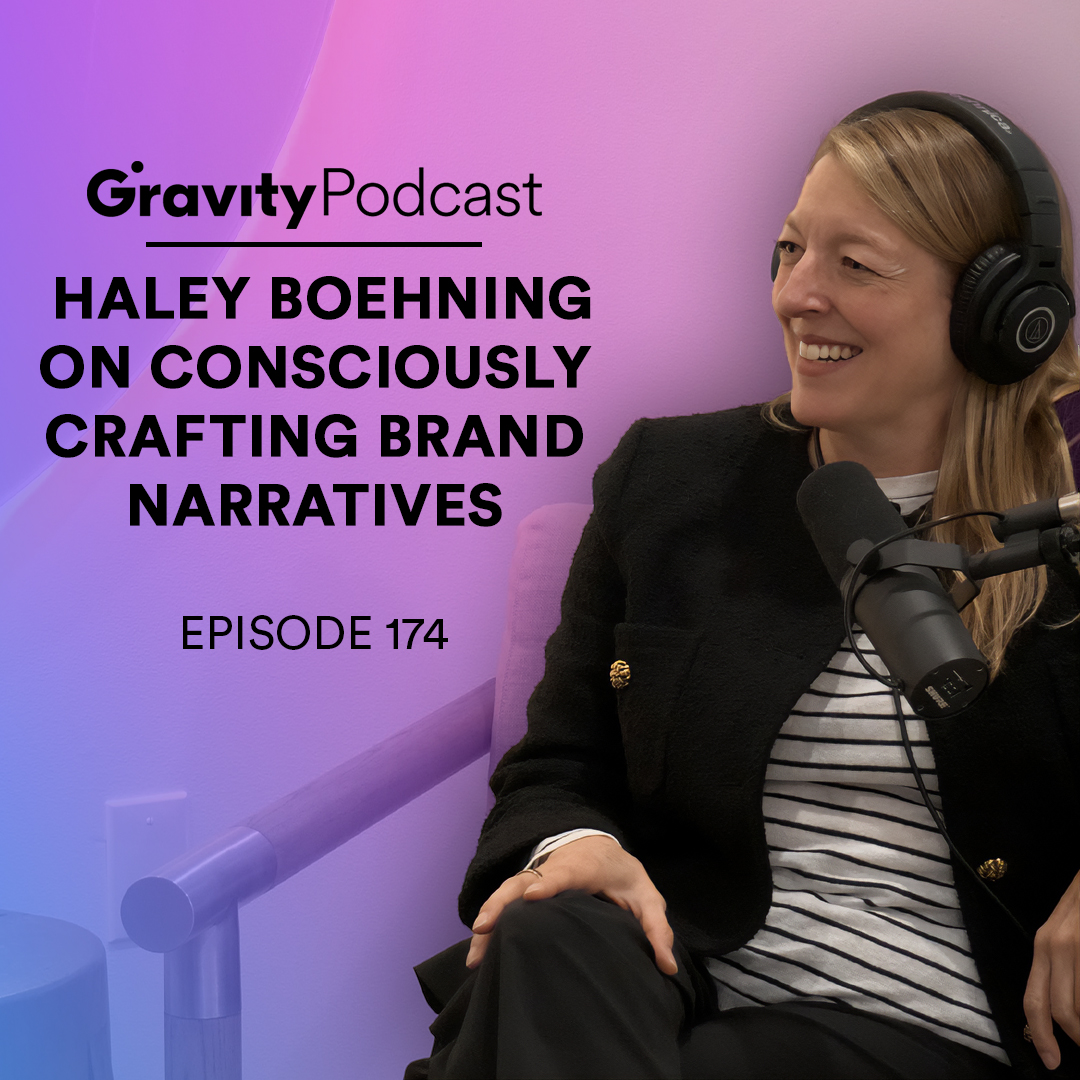Recently, Haley Boehning, founder of Storyforge, was interviewed by Anna and Janel from Strange Birds on their podcast “Flying the Coop.” The conversation explored what it truly means to be purpose-driven in today’s business landscape and how leaders can move beyond purpose as decoration to purpose as practice.
Defining Purpose-Driven Business
Anna: To get us started, what does it mean to be a purpose-driven company in your words?
Haley: That’s a great question. And it’s one of those really deceptively simple answers that you say out loud and you think, well, that’s easy. We can do that, right? But in actual application and practice, it’s really hard.
So to be a purpose-driven company simply means this: that the thing that everyone aligns with and aligns around, the thing that drives you, the thing that you wake up to do every day, is to solve a problem or meet a need out there in the world that you and only you and only your business is uniquely positioned to be able to do.
And that becomes your reason for being every day. And it’s a wonderful, beautiful thing when you see it, but it’s really hard to maintain.
The Critical Distinction: Purpose vs. Mission
Anna: So let’s say you get this beautiful purpose. What happens next? How do you make it real?
Haley: One thing that we do at Storyforge is we make what we think is a very important distinction between purpose and mission.
Purpose is why you exist. It’s the difference that you’re trying to make at that intersection of a need in the world and your ability to fill it.
Mission or missions sometimes are the strategies that you’re going to employ in order to fulfill that purpose.
We find that distinction incredibly important, not necessarily in the telling of the story at the end, but in the forging of the story. Because it helps businesses to see the distinction between the how of what they do every day and the strategies and the programs and the tactics and the services and this north star of their why.
When businesses conflate the two, it can work for a while, but the problem is something dramatic will happen. Oh, I don’t know, a pandemic that will completely upend their ability to continue to do the how the way that they’ve always done it. Markets change, customers change, technology, innovation. And if your why is wrapped up too tightly in the how in your strategies, then that can be paralyzing for a company in times of change and transformation.
Signs Your Purpose Isn’t Working
Anna: What are some day-to-day symptoms that the purpose and mission have gotten conflated and a little bit muddled that you’ve seen in the work that you’ve done?
Haley: My favorite one, and it’s super easy to test, is that you call up a middle manager and you say, quick, what’s your mission statement? And if they do this – oh, wait a second, hold on, I’ve got it here somewhere. It’s in a book, I think. A binder. It’s in a binder.
If they have to do that action, then you know it’s not working.
Another simple test is you ask eight individual leaders in the building, directors, managers, the folks who are really on the ground. Ask them, what’s our mission statement? What’s our purpose? And if you get eight different answers, you also know you have a challenge.
The real issue isn’t that people don’t know where to find your mission statement – it’s that they’re not using it as a decision-making filter. All we do all day in business, everyone that works for you, everyone that you pay to do work for your business, they’re solving problems and they’re making decisions all day. That’s all we do in business. And so how are you solving the problems? How are you making the decisions if not using the framework of your purpose, your mission, your vision?
Making the Business Case for Purpose
Anna: How do you make the business case for being purpose-driven? Financial wins naturally come when the culture in the United States is productivity is the number one value that we have and purpose-driven can feel a little fluffy and a little woo, but it’s not.
Haley: One thing that I try to keep in mind is that purpose without profit is just a dream. We can see a need and we can want to meet that need, but if we don’t have the revenue and we don’t have the resources, then it’s just a dream. But conversely, profit without purpose is mostly meaningless.
One of the analogies that I heard years ago that I really like is that as a human being walking the earth, I need red blood cells to survive. If my body stops making red blood cells, I expire. But I do not wake up every day thinking, oh good, I get to make red blood cells today. That is my reason to be alive today is to walk around and make red blood cells.
Revenue and the financials and the bottom line is a necessary function for a business to continue to operate. However, it’s not a reason for being. It’s not a reason to get up every morning. It’s not the thing that is going to attract the best talent in the world to come and join you. It’s not the thing that’s going to help you make really important and critical decisions at a moment when you have to choose between A and B.
And it’s not going to help you solve problems in ways that helps you get closer to the vision that you have for your customers or for your business or for your community.
Purpose in Practice: Systems and Decisions
Janel: Can you give some other concrete examples of internal systems? Doesn’t have to be about compensation. It could be about anything that either you’ve seen supporting someone’s purpose or hindering someone’s purpose.
Haley: I think the one I see more often than not are businesses for whom customer service is important, hospitality is important, and that somehow gets lost in scale as someone’s trying to find opportunities to save money, to take out unnecessary expense.
Sometimes that human touch that is actually core to the success of that business usually is rooted in their values or their beliefs that are behind that purpose and that vision. Sometimes that gets lost.
My favorite example is actually from my corporate world, and it was well before I got to the business, but I worked for Limited Brands for Les Wexner, who founded his business in 1963. And as the business grew, and I want to say, if I’m remembering the story correctly, it was sometime around, like, a hundred stores, one of his financial guys came to him and said, we have this line item for butterscotch candies, and we’ve got to get rid of it.
These weren’t just candies. When Wexner had one store in Columbus, he put out a bowl of free butterscotch candies at checkout. It created moments of hospitality and gave people a reason to visit. When they removed them to save money, he realized they’d cut off the customer intimacy he’d worked so hard to develop.
Beyond Boardroom Strategy
Haley: This work cannot happen in a vacuum. And that is, unfortunately, what we see more often than not. You get a bunch of very smart people who are leaders of a business, and they think this is our responsibility to set the strategy and determine the direction of this business. And we’re going to lock ourselves in that boardroom until we can come up with it, because that’s our job.
And what gets lost then is, yes, you have seven very, very smart people, but you miss the thousands and thousands of different stakeholders that are all part of that story.
That first insight that we have to have is a stakeholder orientation. We have to do the work to understand who are our stakeholders, what are their needs that we meet, what do they want, and where do we align in terms of how our vision and our beliefs. That has to be done, and it often can’t be done by the seven people in that room.
The Five Essential Questions
Anna: What would be your piece of advice for someone listening to this? Where can they start?
Haley: I think there are these five questions that I think all of us that own businesses are responsible for businesses should ask and be able to answer.
The first, very simply, why do you exist? What is that need in the world that you know that you can meet because of your unique skills, your unique abilities?
The second question is, who do you serve? Who has this need? And what are all of the different stakeholders that are part of the world of you creating your business and fulfilling this need for the people that you are there to serve?
The third question is, what do you stand for? What are the beliefs that you have about your work and how your work has an impact on the world? Get really clear about that set of beliefs.
And then the fourth question is, where are you going? And it’s not just, where are you going as a company, but it is, what is this future that you are working toward that your purpose, if fulfilled, will help create? How do you define that vision?
And then the final question, which unfortunately is where most people start, is, how will you get there? If you have this vision for the future that doesn’t exist, if you know that if you fulfill your purpose, you can help realize that vision, if you have clarity about who you serve and what they need and you know what you stand for, then how will you make this a reality? What are the strategies that you’re going to employ to fulfill that purpose?
Clarity about these five answers is the first step.
To watch the full interview, visit Strange Bird’s Flying the Coop Podcast #1, accessible here.
Want to explore how your business can move beyond purpose as a poster to purpose as practice? Connect with Haley at haley@storyforge.co or visit us at storyforge.co.











